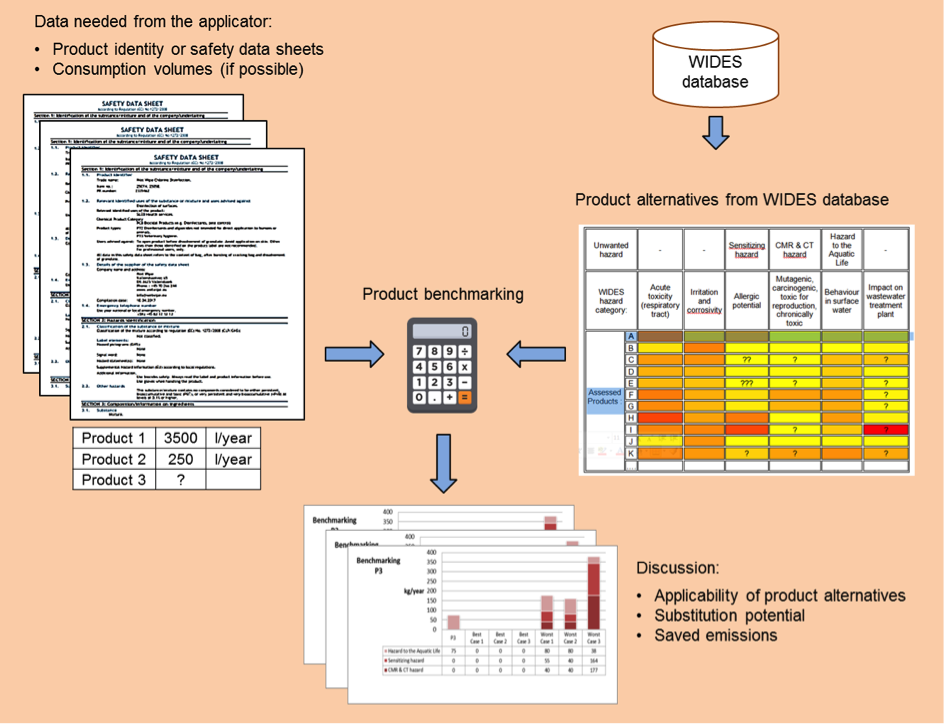Participate in HCWH Europe’s new project on disinfectants used in healthcare!
Central issue
Disinfectants used in healthcare facilities – in particular disinfectants for hands, skin, surfaces, healthcare equipment, instruments or laundry – contain different biocidal active substances. It is well known that these substances differ in their potential hazards to health and the environment, therefore, disinfectants with the same level of efficacy but less risk to human and environmental health should be prioritised.
This project, coordinated by the non-governmental and industry-independent organisation Health Care Without Harm (HCWH) Europe, aims to promote the use of safer and more environmentally friendly disinfectants without compromising hygienic and occupational health standards. As a result of this project, materials and tools will be produced which will help procurers and users of these products make better purchasing decisions.
The first step of this project will be to identify obstacles to the use of safer and more environmentally-friendly disinfectants, such as: lack of knowledge/awareness, lack of infrastructure, non user-friendly products, material incompatibilities, gaps in the spectrum of antimicrobial activity, or a prohibitively high price.
We need you!
To identify these obstacles, we are looking to engage with a wide range of healthcare facilities, particularly with staff involved in the procurement and use of disinfectants. Engagement will be in the form of participation in a working group, a survey/interview, and/or a subsequent benchmarking of disinfectant products.
If you would be interested in participating in this project on behalf of your organisation, please contact us at europe@hcwh.org
Working group
We are looking for representatives from institutions already working on this issue and/or those who have some experience working on the use of hazardous chemicals in healthcare, to join a small working group for this project. We will seek their input when drafting interview/survey questions, conducting a benchmarking exercise, and drafting and disseminating the results of the project.
Interview/online survey
As part of this project, we are also seeking participants for an online survey and a possible follow-up interview (for which the questions will be circulated in advance). The survey will be aimed at healthcare staff responsible for purchasing, selecting, and using disinfectants in hospitals or healthcare institutions.
Survey respondents will be asked to:
- Provide information about their involvement with disinfection, disinfectants, and/or biocidal active substances and their tasks and responsibilities within their organisation
- Provide an overview of the practice of the procurement, selection, and application of disinfectants in their organisation
The online survey can be filled out at the participant’s convenience; additional follow-up interviews will be carried out by Skype or phone and may also be recorded (subject to approval).
Expected time commitment
Online survey: 30-45 mins approx.
Follow-up interview: 60 mins approx.
Benefits: The participants will receive a compact analysis of the hazard profiles of the disinfectants they use at their institutions, as well as a rough estimate of the potential for substitution of these products in the form of reports, guides, and webinars that will be produced as a result of the project.
Product benchmarking involves making a comparison of the individual properties of a range of products with respect to certain categories. For this project, disinfectants with the same efficacy will undergo a comparative assessment based on their hazardous toxic and eco-toxic properties.
The core element of this benchmarking will be a comparative assessment fuelled by data from the users of disinfectants in healthcare (i.e. hospitals or departments of healthcare institutions), as well as data from the Viennese Database for Disinfectants (WIDES database).
The database will serve as a tool that hospitals can use to select alternative, safer, and more environmentally friendly products.
The products and selected alternatives included in this benchmarking must match in terms of efficacy and application conditions. If the calculated emissions of the product alternative(s) is (are) lower than those of the investigated product, a substitution potential is assumed.
The outcome of the benchmarking process will be shared with the users of the products, along with a set of recommendations.
The following graph outlines the core steps and data demand of the process, more detailed information about benchmarking can be found here.
Expected time commitment: Depending on the product portfolio, the time commitment is roughly estimated to be between 15 and 50 hours.
Benefits: The participating organisations will receive a detailed analysis of the hazardous emissions of disinfectants they use, together with a list of proposed alternative products. If no alternatives can be proposed (i.e. there are no alternatives with less toxic emissions) the organisation may then use this as a confirmation of their product choice.
If you would be interested in participating in this project on behalf of your organisation, please contact us at europe@hcwh.org

